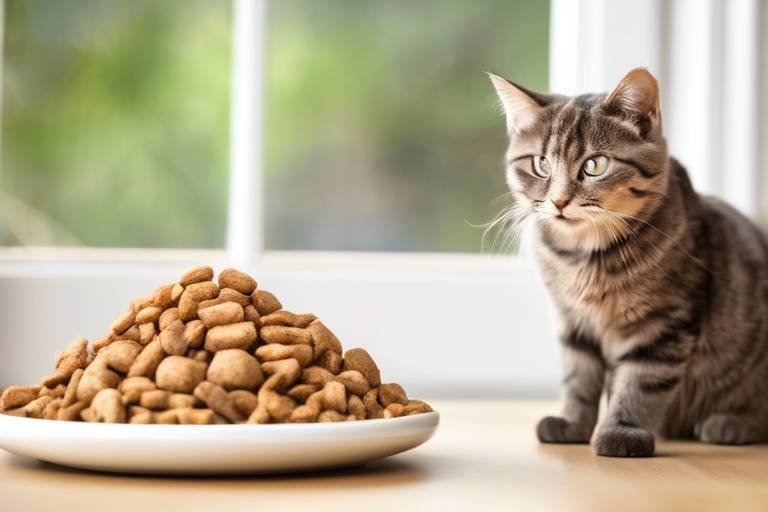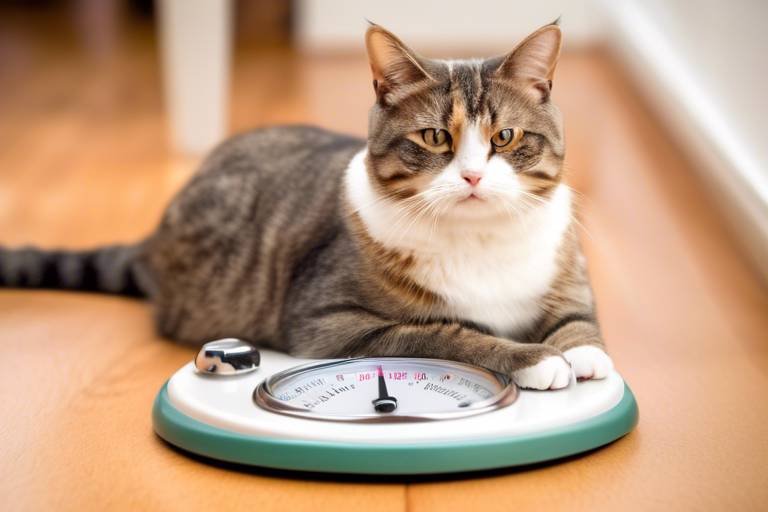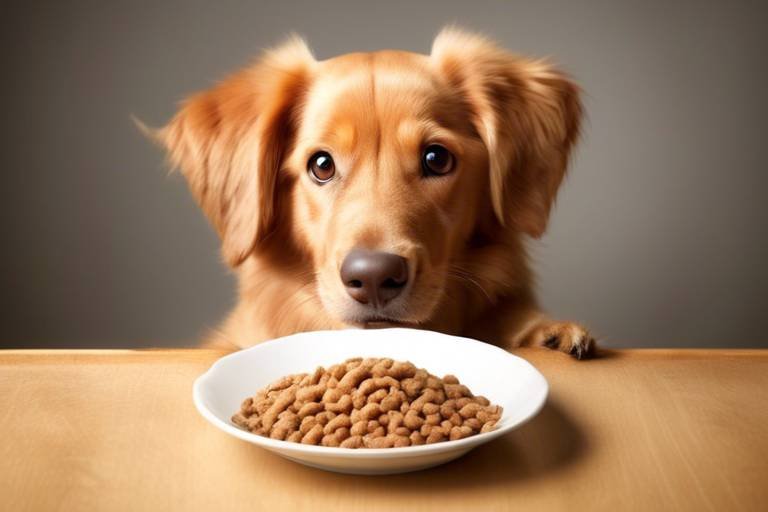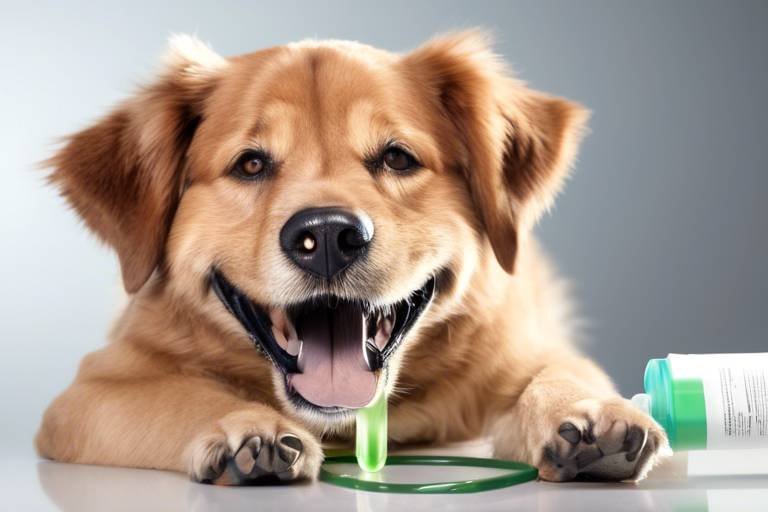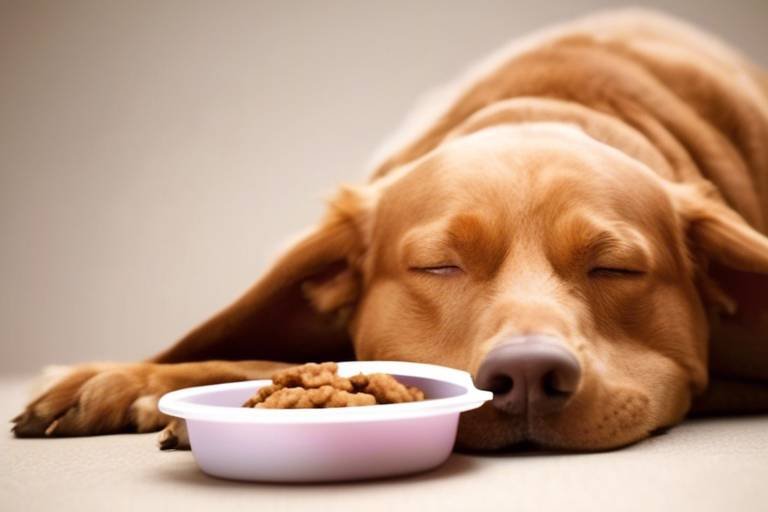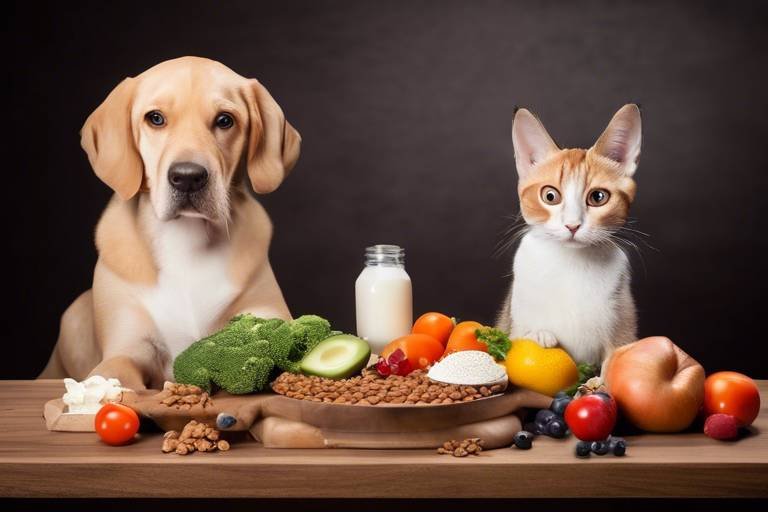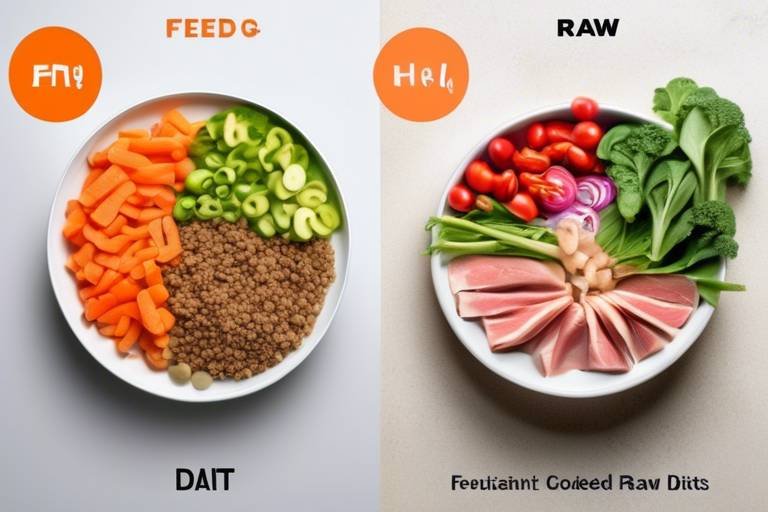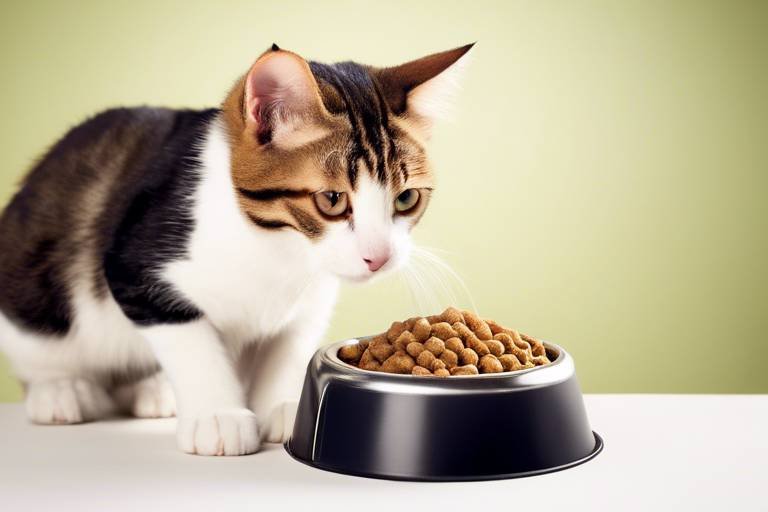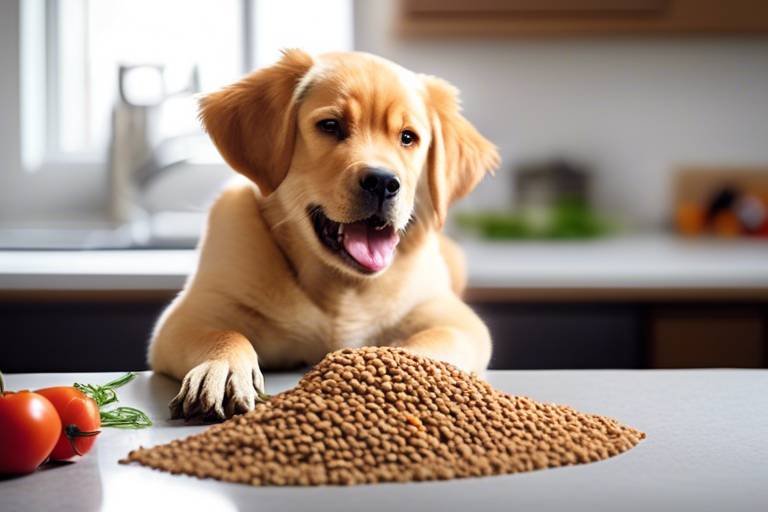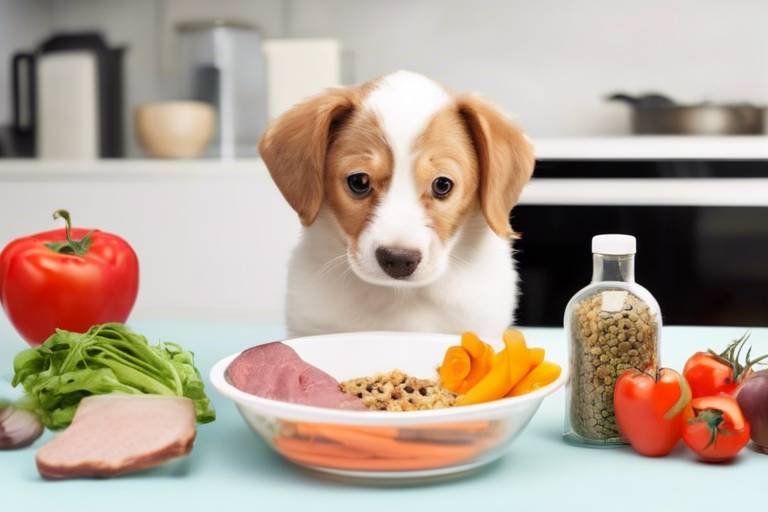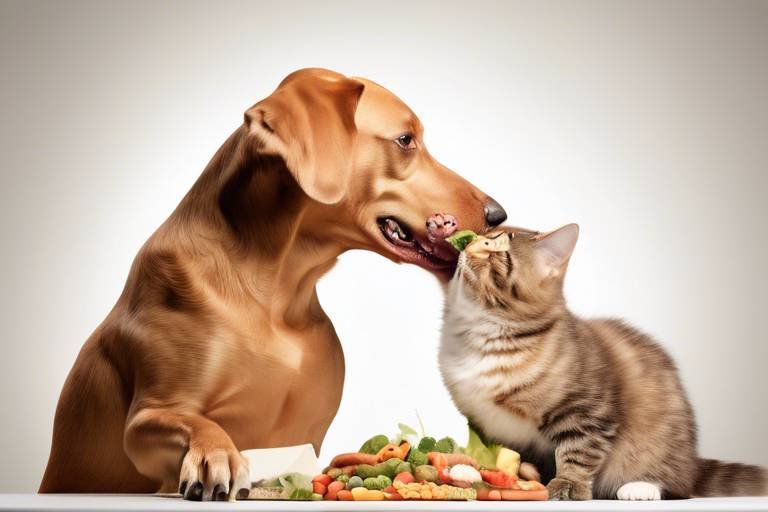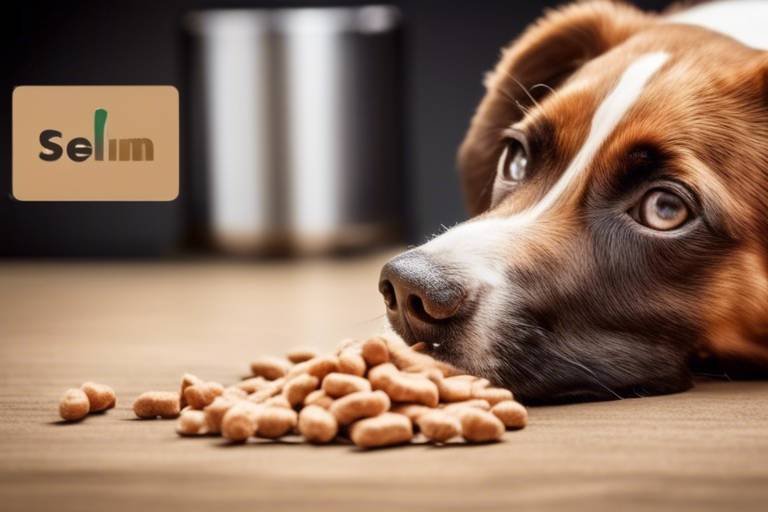How to Choose a Balanced Diet for Indoor Cats
Choosing a balanced diet for your indoor cat is not just about filling their bowl with food; it’s a crucial aspect of their health and happiness. Just like us, cats have unique nutritional needs that must be met to keep them thriving. But where do you even start? Well, it’s all about understanding what goes into their food and how it affects their overall well-being. In this article, we’ll dive deep into the world of feline nutrition, explore various food types, and discuss feeding practices that can make a world of difference for your furry friend.
To select the right diet for your indoor cat, you first need to grasp the fundamentals of cat nutrition. Cats are obligate carnivores, which means their diet should primarily consist of animal-based proteins. These proteins provide essential amino acids like taurine, which are vital for heart and eye health. Additionally, fats are crucial as they provide energy and support healthy skin and fur. But it doesn’t stop there! Carbohydrates, while not as essential, can be a source of energy and fiber, aiding digestion. Vitamins and minerals also play a significant role in maintaining a cat's immune system and overall health. Therefore, a balanced diet should include:
- High-quality proteins
- Healthy fats
- Essential vitamins and minerals
When it comes to cat food, the options are vast and varied. You’ll find dry kibble, wet food, and even raw diets available in pet stores. Each type has its own set of pros and cons, especially for indoor cats. For instance, dry kibble is often more convenient and can help keep your cat’s teeth clean, while wet food is generally more palatable and hydrating. On the other hand, raw diets can be beneficial but require careful handling to avoid health risks. Let’s break down these options further.
When weighing the options between dry and wet food, consider the following:
| Type | Benefits | Drawbacks |
|---|---|---|
| Dry Food |
|
|
| Wet Food |
|
|
Dry food can be a great option for busy pet owners. It’s easy to measure out and can help keep your cat’s teeth clean through the crunching action. However, it’s crucial to ensure your cat drinks enough water to stay hydrated, as dry food lacks moisture.
On the flip side, wet food is packed with moisture, making it an excellent choice for hydration. Plus, it often smells better and tastes more appealing, which can entice even the pickiest of eaters to dig in. This is especially important for indoor cats who may not get as much exercise and can be prone to weight gain.
Raw diets are gaining popularity among cat owners, and for a good reason. They can provide a diet that mimics what cats would eat in the wild. However, it’s essential to approach raw feeding with caution. Ensure that the diet is balanced and properly handled to avoid contamination. Consulting with a veterinarian before making the switch is highly recommended.
Establishing a proper feeding schedule and portion control is vital. Indoor cats can easily become overweight, so it’s essential to measure out their food and stick to a consistent feeding routine. But how do you determine the right portion sizes?
Understanding how to determine appropriate portion sizes based on your cat’s age, weight, and activity level can help maintain a healthy weight. Most cat food packaging includes feeding guides that can serve as a helpful starting point. However, every cat is unique, so you may need to adjust based on their specific needs.
Feeding frequency also plays an important role in your cat’s diet. Some owners prefer to feed their cats multiple small meals throughout the day, which can help maintain energy levels and prevent overeating. Others may opt for fewer, larger meals. Experimenting with different schedules can help you find what works best for your cat.
Some indoor cats may have special dietary needs due to health conditions or sensitivities. It’s crucial to recognize these needs to ensure their nutritional requirements are met.
Identifying food allergies and sensitivities is essential. Common allergens include grains, dairy, and certain proteins. If you notice any adverse reactions, consult your veterinarian for a tailored diet plan.
Managing your cat’s weight is paramount to their health. Adjusting their diet and incorporating playtime can help promote a healthy lifestyle. Regular exercise is just as important as the right diet!
When in doubt, consulting with a veterinarian is essential. They can provide personalized dietary recommendations tailored to your cat’s health status and nutritional needs. Regular health check-ups can also help monitor your cat’s weight and overall health, ensuring that any necessary dietary changes are made promptly.
Regular vet visits can help keep track of your cat’s health and adjust dietary plans as needed. This proactive approach ensures long-term well-being and helps catch any potential health issues early.
Veterinarians can offer specific dietary recommendations based on your cat’s age, weight, and health conditions. This guidance can help you make informed choices that support your cat’s health and happiness.
1. How often should I feed my indoor cat?
Most experts recommend feeding adult cats two to three times a day. However, every cat is different, so it’s important to find a routine that works for you and your feline friend.
2. Can I mix dry and wet food?
Yes, mixing dry and wet food can provide a balanced diet and cater to your cat’s preferences. Just be sure to adjust portion sizes accordingly.
3. What should I do if my cat has food allergies?
If you suspect your cat has food allergies, consult your veterinarian for a proper diagnosis and dietary recommendations tailored to their needs.
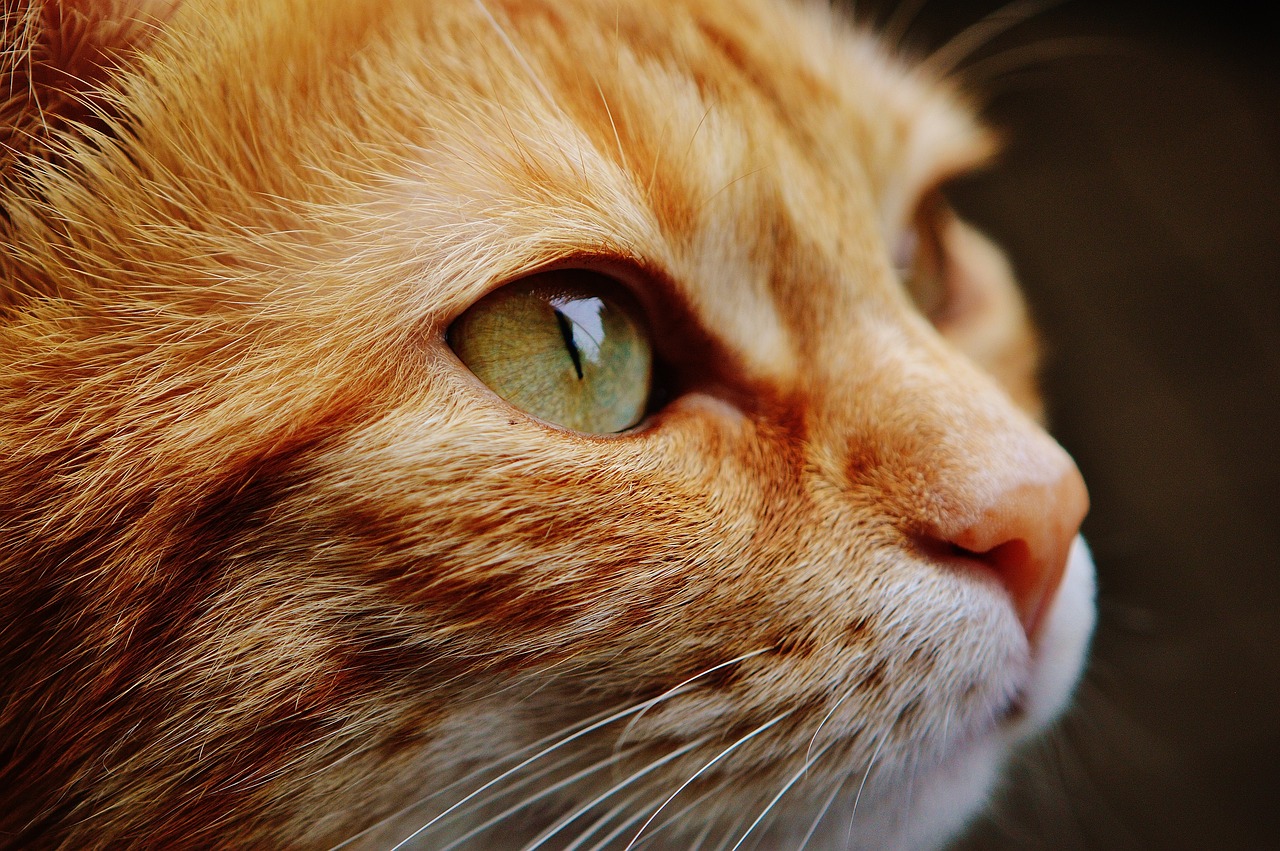
Understanding Cat Nutrition
When it comes to our furry friends, understanding their nutritional needs is like unlocking the secret to their happiness and health. Cats, especially indoor ones, have unique dietary requirements that differ significantly from their outdoor counterparts. This is because indoor cats are generally less active, which means their caloric intake must be carefully balanced to prevent obesity while still providing all the essential nutrients they need to thrive.
First and foremost, proteins are vital for cats, as they are obligate carnivores. This means they require a diet high in animal-based proteins to support their muscle maintenance, energy levels, and overall health. A good rule of thumb is to look for cat foods where the first ingredient is a quality protein source, such as chicken, turkey, or fish. In fact, the amount of protein in their diet should ideally be around 30-40% for optimal health.
Next up, we have fats. While they often get a bad rap, fats are essential for providing energy, supporting cell structure, and aiding in the absorption of fat-soluble vitamins. Look for sources of healthy fats, like fish oil or chicken fat, which can also contribute to a shiny coat and healthy skin. Aim for a fat content of about 15-20% in their diet.
Carbohydrates are another component of cat nutrition, but they should be consumed in moderation. Cats do not have a significant requirement for carbs, but they can benefit from them as a source of energy. It's important to choose cat foods that contain digestible carbohydrates, such as rice or sweet potatoes, rather than fillers like corn or wheat that can lead to digestive issues.
Vitamins and minerals are the finishing touches to a well-rounded diet. These micronutrients play crucial roles in various bodily functions, from immune support to bone health. For instance, taurine is an essential amino acid that cats cannot produce in sufficient quantities, and a deficiency can lead to serious health issues. Therefore, ensuring that your cat's food is fortified with the right vitamins and minerals is key.
To summarize, a balanced diet for indoor cats should include:
- High-quality proteins (30-40% of their diet)
- Healthy fats (15-20% of their diet)
- Moderate carbohydrates (from digestible sources)
- Essential vitamins and minerals (including taurine)
By paying attention to these nutritional components, you can help ensure that your indoor cat leads a healthy and active life. Remember, every cat is unique, so it's always a good idea to consult with your veterinarian to tailor their diet to their specific needs. After all, a happy cat is a healthy cat!
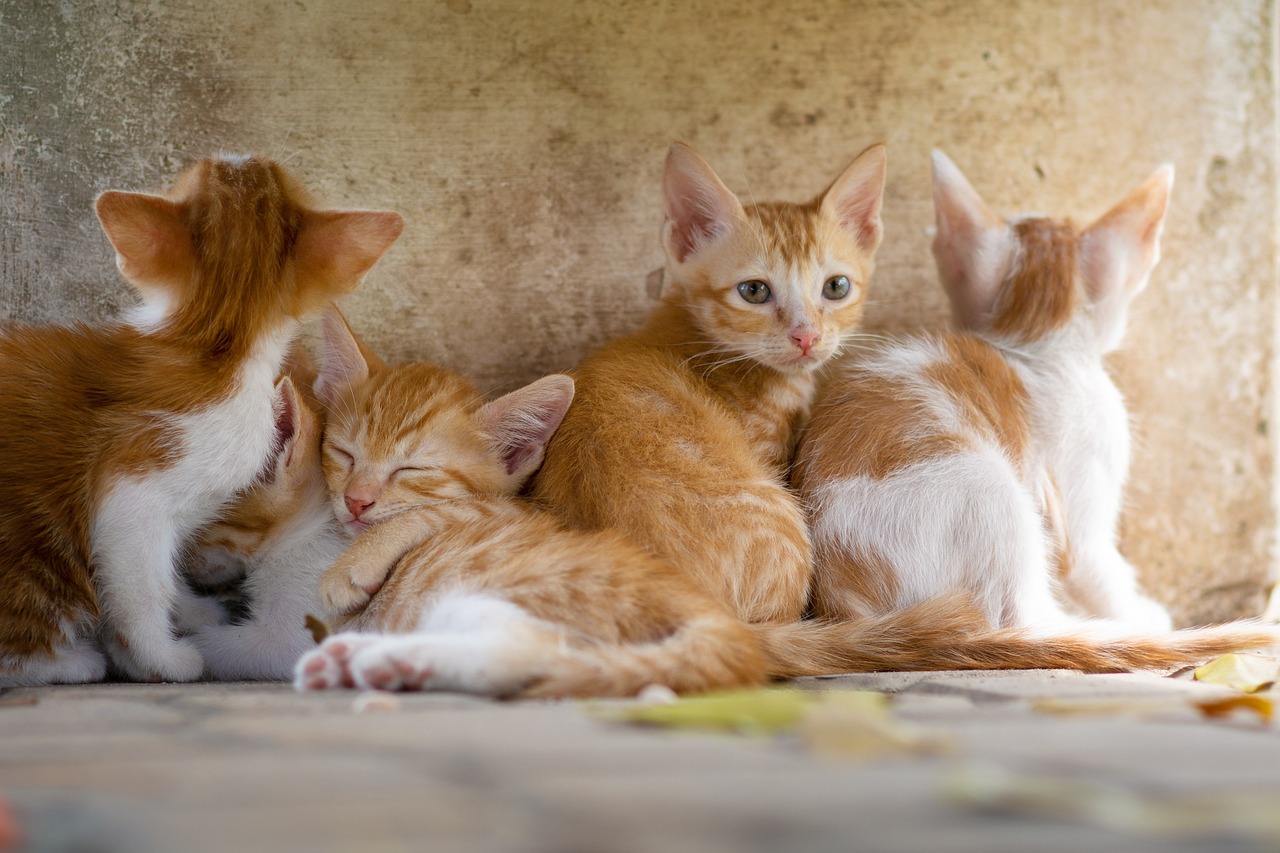
Types of Cat Food
When it comes to feeding your indoor cat, understanding the different types of cat food available is essential. Not all cat foods are created equal, and each type has its own unique set of benefits and drawbacks. The major categories of cat food include dry kibble, wet food, and raw diets. Each of these options caters to various nutritional needs and preferences, so let’s dive into what each type has to offer.
Dry kibble is perhaps the most common choice for cat owners. It’s convenient, easy to store, and has a long shelf life. One of the significant advantages of dry food is that it can help keep your cat's teeth clean due to its crunchy texture. However, it often lacks the moisture content that is crucial for hydration, especially for indoor cats that may not drink enough water. As a result, it’s vital to ensure that your cat has access to fresh water at all times.
On the other hand, wet food is packed with moisture, making it a great option for keeping your cat hydrated. This type of food is often more palatable and can be especially appealing to picky eaters. Wet food can also be beneficial for cats with certain health issues, such as urinary tract problems, as the added moisture can help promote urinary health. However, it’s essential to note that wet food typically has a shorter shelf life once opened, and it can also be more expensive than dry kibble.
For those considering a more natural approach, raw diets have gained popularity among some cat owners. Proponents of raw feeding argue that it closely mimics a cat's natural diet, which can lead to better health outcomes. However, this diet requires careful handling and preparation to avoid bacterial contamination and ensure balanced nutrition. It’s crucial to do thorough research and possibly consult a veterinarian before making the switch to a raw diet.
| Type of Cat Food | Benefits | Drawbacks |
|---|---|---|
| Dry Kibble |
|
|
| Wet Food |
|
|
| Raw Diet |
|
|
Ultimately, the best choice for your indoor cat depends on their individual preferences, health needs, and your lifestyle. It’s always a good idea to experiment with different types of food to see what your furry friend enjoys the most. Remember, a balanced diet is vital for your cat's overall health and wellbeing, so pay attention to their reactions and consult with your veterinarian if you have any concerns.
Q: Can I mix dry and wet food for my cat?
A: Yes, mixing dry and wet food can provide a balanced diet, combining the benefits of both types. Just ensure that the total daily intake aligns with your cat's nutritional needs.
Q: How do I know if my cat is getting enough nutrients?
A: A well-balanced diet will lead to healthy skin, a shiny coat, and consistent energy levels. Regular check-ups with your veterinarian can also help monitor your cat's health.
Q: Is it safe to switch my cat's food suddenly?
A: It’s best to transition to a new food gradually over a week or so to avoid digestive upset. Mix the new food with the old food, gradually increasing the new food's proportion.
Dry Food vs. Wet Food
When it comes to feeding your indoor cat, the age-old debate of dry food versus wet food often surfaces. Both options have their merits, and understanding the differences can help you make the best choice for your furry friend. First off, let’s consider the nutritional value. Dry food, or kibble, is typically more concentrated in nutrients, meaning it can provide a balanced diet in smaller portions. This can be particularly beneficial for busy pet owners, as it doesn’t spoil quickly and can be left out during the day without worry.
However, one of the significant drawbacks of dry food is its low moisture content. Cats are naturally inclined to get a lot of their hydration from their food, and dry kibble might not provide enough liquid to keep them adequately hydrated. This is especially important for indoor cats, who may not drink enough water throughout the day. On the other hand, wet food is packed with moisture, which can help ensure your cat stays hydrated. This can be especially crucial for cats prone to urinary tract issues, as hydration plays a key role in preventing these problems.
In terms of palatability, wet food often wins the popularity contest. Many cats find it more appealing due to its aroma and texture, which can be a game-changer for picky eaters. If you’ve ever seen your cat turn their nose up at a bowl of dry kibble, you know the struggle! The rich flavors in wet food can entice even the fussiest felines to dive in. However, it's worth noting that wet food can be more expensive and requires refrigeration once opened, which may not fit every cat owner's lifestyle.
To summarize the pros and cons, consider the following table:
| Type of Food | Benefits | Drawbacks |
|---|---|---|
| Dry Food |
|
|
| Wet Food |
|
|
Ultimately, the choice between dry and wet food may come down to your cat's individual preferences and health needs. Some cat owners even choose to mix both types of food, providing the best of both worlds. This way, you can ensure your cat receives the necessary nutrients while also enjoying the benefits of hydration. Just remember, whatever option you choose, always monitor your cat's health and consult with your veterinarian for tailored advice!
Benefits of Dry Food
When it comes to feeding your indoor cat, dry food often takes center stage for a variety of compelling reasons. One of the most significant advantages is its convenience. Dry cat food is easy to store, measure, and serve, making it a hassle-free option for busy cat owners. You can simply pour it into a bowl, and your furry friend is ready to munch away!
Another notable benefit is the potential for improved dental health. Many dry foods are specifically formulated to help reduce plaque and tartar buildup on your cat's teeth. As they chew, the crunchy texture can act like a toothbrush, helping to keep their teeth cleaner than wet food might. However, it’s essential to remember that while dry food can assist in dental care, it shouldn’t replace regular veterinary dental check-ups and cleanings.
Moreover, dry food tends to have a longer shelf life compared to wet food. This means you can buy in bulk without worrying about spoilage, which can save you both time and money in the long run. Just think of it as stocking up on your favorite snacks—no need to rush to the store every week!
However, it's important to note that not all dry foods are created equal. When selecting a dry cat food, look for options that are high in protein and low in fillers. Quality ingredients can make a world of difference in your cat's overall health. Check the label for meat as the first ingredient and avoid those that list corn or soy as primary components.
In terms of portion control, dry food can be easier to manage. You can easily measure out the exact amount your cat needs, which is crucial for maintaining a healthy weight. For indoor cats, who may not get as much exercise as their outdoor counterparts, keeping a close eye on their caloric intake is vital.
In summary, while dry food has its advantages, it’s essential to balance it with other food types to ensure your indoor cat receives a well-rounded diet. Combining dry food with wet food or fresh water can help meet their hydration needs, especially since indoor cats are often less active and may not drink as much water as they should. So, while dry food is a fantastic option, consider it as part of a broader feeding strategy!
- Is dry food better than wet food for my cat? It depends on your cat's individual needs. Dry food is convenient and can help with dental health, while wet food provides more moisture.
- How much dry food should I feed my indoor cat? Portion sizes depend on your cat's weight, age, and activity level. Always refer to the feeding guidelines on the food packaging.
- Can I mix dry food with wet food? Yes, many cat owners find that mixing both types of food can provide a balanced diet and keep their cats interested in their meals.
- What should I look for in dry cat food? Look for high-quality ingredients, with meat as the first ingredient, and avoid foods with fillers like corn or soy.
Benefits of Wet Food
When it comes to feeding our beloved indoor cats, the choice between wet and dry food often sparks lively debates among pet owners. However, wet food holds a special place in the hearts (and stomachs) of many felines for a multitude of reasons. Firstly, one of the most significant advantages of wet food is its high moisture content. Cats are natural hunters, and in the wild, they obtain most of their water from their prey. Indoor cats, however, often rely solely on their food for hydration. Wet food can provide up to 75% moisture, helping to keep your furry friend hydrated, which is crucial for their overall health and well-being.
Another noteworthy benefit of wet food is its palatability. Many cats find wet food irresistible, with its rich flavors and enticing aromas. This can be especially advantageous for picky eaters or cats recovering from illness, as the appealing texture and taste can stimulate their appetite. In fact, a cat that enjoys their food is more likely to eat enough to meet their nutritional needs, which is vital for maintaining a healthy weight and energy levels.
Moreover, wet food can be beneficial for dental health. While it's not a substitute for regular dental care, the texture of wet food can help reduce plaque buildup on your cat's teeth. Some brands even formulate their wet food to include dental health benefits, providing an added layer of care for your feline's oral hygiene. This is an important consideration, especially for indoor cats who may not have the same opportunities for natural tooth cleaning as their outdoor counterparts.
It's also worth mentioning that wet food often contains a higher protein content compared to dry food, which aligns more closely with a cat's natural dietary needs. Cats are obligate carnivores, meaning they thrive on a diet rich in animal proteins. Wet food formulations typically prioritize meat as the primary ingredient, ensuring that your cat receives the essential amino acids necessary for maintaining muscle mass, energy levels, and overall vitality.
In summary, the benefits of wet food for indoor cats are numerous and compelling. From enhancing hydration to boosting palatability and supporting dental health, choosing wet food can be a game-changer for your feline friend. As with any dietary choice, it's essential to pay attention to the specific needs of your cat, ensuring that their diet is balanced and meets their unique health requirements.
- Is wet food better than dry food for indoor cats? While both types have their benefits, wet food is generally better for hydration and palatability. It's often recommended to include both in a balanced diet.
- How often should I feed my cat wet food? It depends on your cat's age, weight, and activity level. Consult with your veterinarian for personalized feeding recommendations.
- Can wet food help with my cat's weight management? Yes, wet food can be beneficial for weight management as it is often lower in calories and higher in moisture, which can help cats feel fuller.
- Are there any downsides to feeding my cat wet food? Wet food can be more expensive and may require refrigeration after opening. It's also essential to ensure your cat's diet is balanced and includes the necessary nutrients.
Raw Diet Considerations
When it comes to feeding your indoor cat, the idea of a raw diet can be both intriguing and daunting. Many cat owners are drawn to the notion of providing their feline friends with a diet that mimics what they would eat in the wild. However, before diving into the world of raw feeding, it's essential to weigh the benefits against the risks.
One of the primary advantages of a raw diet is that it can be highly nutritious. Raw meat, organs, and bones are rich in essential proteins and fats, which are vital for a cat's overall health. Additionally, proponents of raw feeding argue that it can lead to improved coat condition, better digestion, and increased energy levels. However, it’s crucial to ensure that the diet is well-balanced. A raw diet should include a variety of protein sources, organ meats, and supplements to meet all of a cat's nutritional needs.
On the flip side, there are significant risks associated with feeding a raw diet. One major concern is the potential for bacterial contamination. Raw meat can harbor harmful bacteria such as Salmonella and E. coli, which can pose health risks not just to your cat but also to humans in the household. It's essential to handle raw food with care, maintaining strict hygiene practices to minimize the risk of contamination. Moreover, a poorly balanced raw diet can lead to nutritional deficiencies or excesses, which can adversely affect your cat's health.
To help you navigate the complexities of a raw diet, consider the following key points:
- Consult with a Veterinarian: Before transitioning to a raw diet, it’s vital to seek advice from a veterinarian who understands feline nutrition. They can help you formulate a balanced diet that meets your cat's specific needs.
- Research Proper Handling: Learn about safe food handling practices to reduce the risk of bacterial infections. This includes proper storage, preparation, and cleaning of surfaces and utensils.
- Monitor Your Cat's Health: Keep an eye on your cat’s health after switching to a raw diet. Any changes in behavior, weight, or digestion should be discussed with your vet.
In conclusion, a raw diet can offer potential benefits for indoor cats, but it requires careful planning and consideration. By understanding the nutritional requirements, handling practices, and potential risks, you can make an informed decision that supports your cat's health and wellbeing. Remember, every cat is unique, and what works for one might not work for another, so always tailor your approach to your individual feline friend.
1. Is a raw diet safe for indoor cats?
While a raw diet can be nutritious, it carries risks such as bacterial contamination. It's crucial to consult with a veterinarian and follow proper handling practices.
2. What should be included in a raw diet for cats?
A balanced raw diet should consist of various protein sources, organ meats, and essential supplements to meet all of a cat's nutritional needs.
3. How can I transition my cat to a raw diet?
Transition gradually by mixing raw food with their current diet, allowing your cat to adjust to the new food over a week or two.
4. Can I prepare raw food at home?
Yes, but it's essential to research and ensure that the diet is balanced and safe. Consulting a veterinarian is recommended.
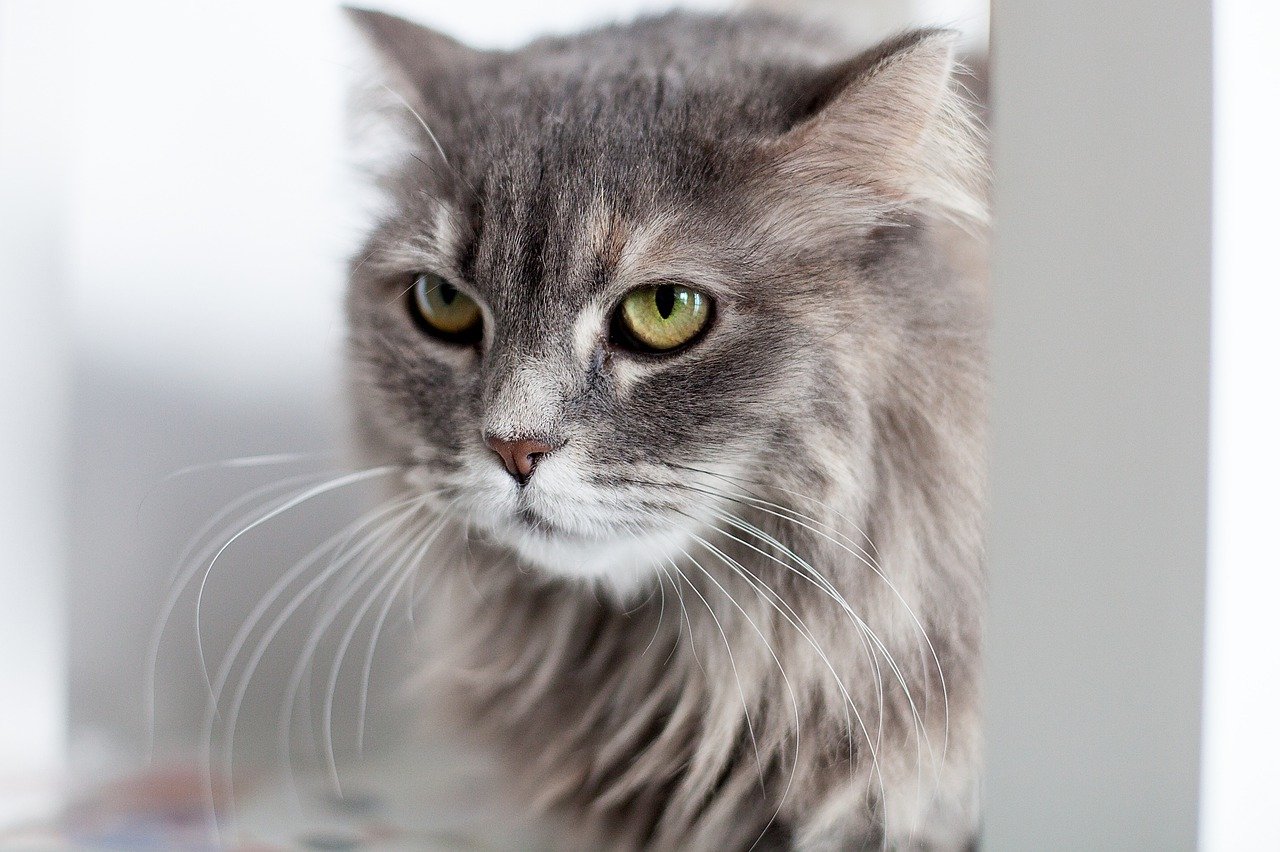
Portion Control and Feeding Schedule
When it comes to keeping our indoor cats healthy, portion control and a consistent feeding schedule are absolutely vital. Think of it as crafting a masterpiece; every brushstroke counts, and in this case, every morsel of food can make a significant difference in your cat's overall health. Overfeeding can lead to obesity, which is a common issue for indoor cats since they tend to be less active than their outdoor counterparts. So, how do you strike the right balance?
First off, you need to understand that not all cats are created equal. Their nutritional needs can vary based on several factors such as age, weight, and activity level. For instance, a playful kitten will have different caloric needs compared to a senior cat who prefers lounging on the couch. To help you determine the right portion sizes, you can consult the feeding guidelines usually provided on cat food packaging. However, these are just starting points, and it’s essential to monitor your cat’s body condition and adjust accordingly.
One effective way to manage portion sizes is to use a measuring cup. This might sound a bit tedious, but it’s a small effort that can lead to a healthier, happier cat. You can also create a feeding schedule that suits both you and your feline friend. Many cat owners find success with multiple small meals throughout the day rather than one or two large ones. This method can help keep your cat’s energy levels stable and may prevent them from begging for food.
To visualize how you might set up a feeding routine, consider the following table:
| Time | Meal Type | Portion Size |
|---|---|---|
| 7:00 AM | Breakfast | 1/2 cup dry food |
| 12:00 PM | Lunch | 1/4 cup wet food |
| 5:00 PM | Dinner | 1/2 cup dry food |
| 8:00 PM | Snack | 1/4 cup treats |
This sample schedule can be adjusted based on your cat's specific needs and preferences. It’s important to keep an eye on their weight and overall health, making changes as necessary. If you notice that your cat is gaining weight, it might be time to reduce portion sizes or reconsider the types of food you are offering.
In addition to portion control, the feeding environment also plays a significant role in how much your cat eats. Make sure that their food and water bowls are placed in a quiet area free from distractions. Cats are creatures of habit, so maintaining a consistent routine can help them feel secure and reduce anxiety around mealtime.
Lastly, don’t forget to factor in any treats or snacks you give throughout the day. While it’s tempting to spoil our furry friends, treats should only make up about 10% of their daily caloric intake. This ensures that they still receive the necessary nutrients from their main meals.
- How often should I feed my indoor cat? It's generally recommended to feed adult cats two meals a day, but some owners prefer to offer smaller meals more frequently.
- What should I do if my cat is overweight? Consult your veterinarian for tailored advice, but generally, reducing portion sizes and increasing playtime can help.
- Can I free-feed my indoor cat? Free feeding can lead to overeating and obesity, so it’s better to stick to a structured feeding schedule.
Determining Portion Sizes
When it comes to feeding your indoor cat, determining the right portion sizes is like finding the perfect balance in a relationship—too little, and they might feel neglected; too much, and they could become overwhelmed. It's essential to consider various factors, such as your cat's age, weight, activity level, and even their unique metabolism. Just like humans, every cat has its own set of needs, and understanding these can help prevent health issues like obesity or malnutrition.
To start, you should refer to the feeding guidelines provided on the cat food packaging. Most brands offer a recommended daily intake based on your cat's weight. However, these are just guidelines and may not fit every cat perfectly. For instance, an active cat may require more food than a sedentary one, even if they weigh the same. It's crucial to monitor your cat's body condition and adjust portions accordingly. A good rule of thumb is to feel for the ribs; if you can easily feel them without excess fat covering, your cat is likely at a healthy weight.
Here’s a simple breakdown to help you determine the right portion sizes:
| Cat's Weight (lbs) | Daily Caloric Intake (kcal) | Recommended Portion Size (cups of dry food) |
|---|---|---|
| 5 | 150 | 1/2 |
| 10 | 200 | 3/4 |
| 15 | 300 | 1 |
| 20 | 400 | 1 1/4 |
In addition to weight, consider your cat's age. Kittens typically require more calories than adults because they are growing rapidly. Conversely, senior cats might need fewer calories due to reduced activity levels. If you're unsure, consult your veterinarian for personalized recommendations. They can help you calculate your cat's ideal caloric intake based on their specific circumstances.
Another factor to consider is your cat's activity level. If your indoor cat is a little ball of energy, they may need a bit more food than a couch potato. Engaging your cat in playtime can also help manage their weight and keep them healthy. Think of it as a two-for-one deal: exercise for them and a chance for you to bond!
Ultimately, portion control is about finding that sweet spot where your cat feels satisfied but not stuffed. Regularly monitoring their weight and adjusting their food intake accordingly will help maintain their health and happiness. Remember, a happy cat is a healthy cat!
- How often should I weigh my cat? It's a good idea to weigh your cat monthly to monitor any significant changes in weight.
- Can I free-feed my indoor cat? Free-feeding can lead to overeating and obesity. It's generally better to stick to a scheduled feeding routine.
- What if my cat doesn't finish their food? If your cat consistently leaves food behind, consider reducing the portion size or trying a different food that they may find more appealing.
Feeding Frequency
When it comes to keeping our indoor cats happy and healthy, plays a pivotal role. Just like us humans, cats thrive on routine, and establishing a consistent feeding schedule can significantly impact their overall well-being. But how often should you feed your feline friend? The answer isn't one-size-fits-all; it depends on various factors, such as their age, weight, and activity level. Let's dive into some key considerations!
For most indoor cats, feeding them two to three times a day is often recommended. This frequency allows for better digestion and helps prevent obesity, a common issue in indoor cats. Think of it this way: if you were to eat one large meal a day, you'd likely feel sluggish and uncomfortable. The same goes for your cat! By breaking their meals into smaller portions, not only do you keep their metabolism active, but you also keep them feeling satisfied and less likely to beg for food.
However, some cat owners prefer to offer free feeding, where dry food is available at all times. While this method can be convenient, it can lead to overeating, especially in less active cats. It’s essential to monitor your cat's weight and adjust the amount of food accordingly. If you notice your kitty packing on the pounds, it may be time to reconsider that free-feeding strategy.
Here’s a quick breakdown of feeding frequency based on your cat’s life stage:
| Life Stage | Feeding Frequency |
|---|---|
| Kittens (up to 6 months) | 3-4 times a day |
| Adult Cats (1-7 years) | 2-3 times a day |
| Senior Cats (7+ years) | 2 times a day |
As your cat ages, their metabolism and energy levels change, which may require adjustments to their feeding schedule. For instance, senior cats might benefit from smaller, more frequent meals to maintain their weight and energy without overloading their systems. However, always keep an eye on their appetite; if they suddenly start eating less, it could be a sign of an underlying health issue that needs attention.
Additionally, consider your cat's personality. Some cats are grazers and prefer to nibble throughout the day, while others may enjoy the excitement of meal times. Observing your cat's behavior can provide insights into their preferences, helping you tailor their feeding schedule to suit their needs.
In conclusion, establishing a proper feeding frequency is essential for your indoor cat's health. Whether you choose to feed them multiple small meals or stick with a couple of larger ones, consistency is key. Remember, every cat is unique, so don't hesitate to experiment until you find what works best for your furry companion!
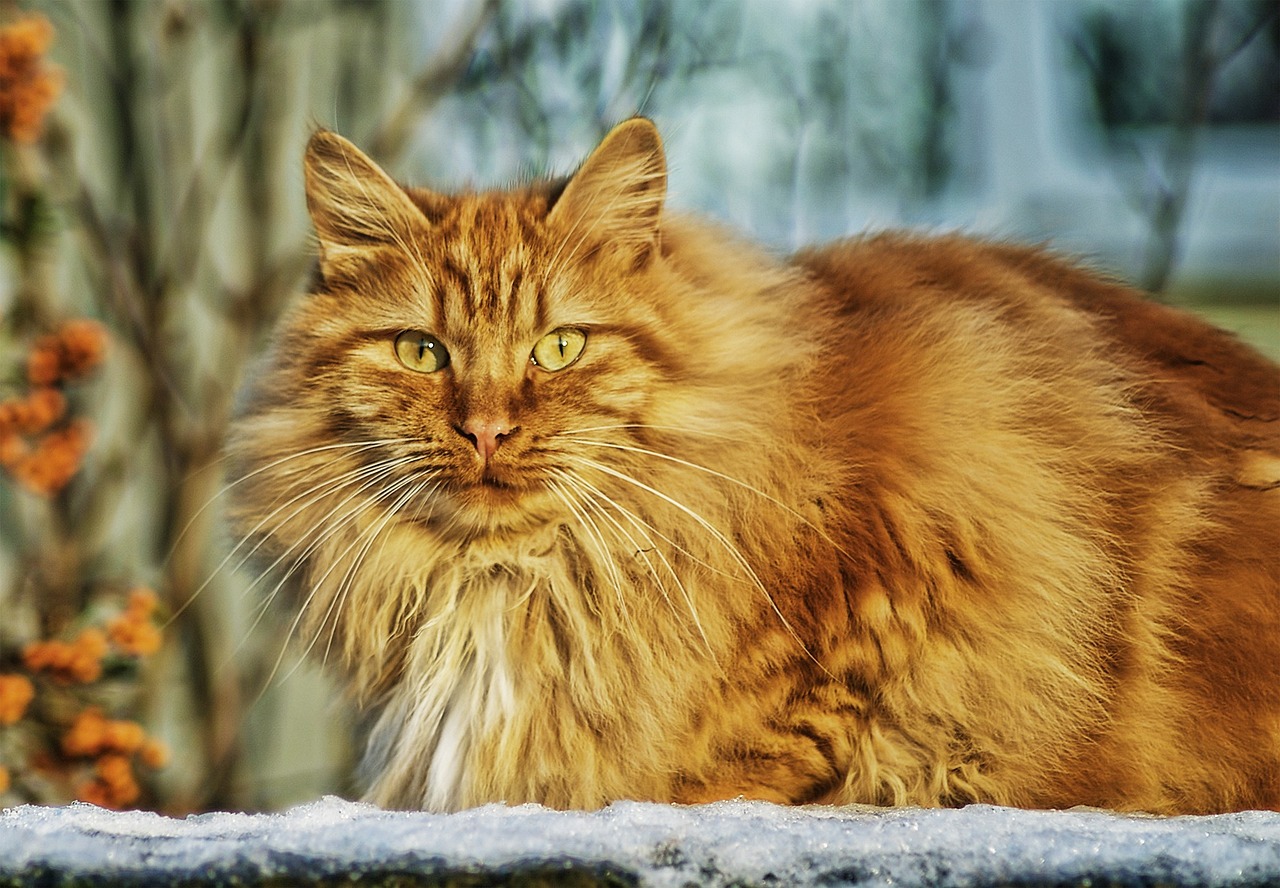
Special Dietary Needs
When it comes to our beloved indoor cats, understanding their is paramount. Just like humans, cats can have unique health conditions or sensitivities that require tailored diets. For instance, some cats may be prone to obesity, while others might have food allergies or intolerances. Recognizing these needs early can make a world of difference in their overall health and happiness.
Indoor cats often lead a more sedentary lifestyle compared to their outdoor counterparts. This can make them more susceptible to weight gain and associated health issues. Therefore, it's essential to focus on a balanced diet that not only meets their caloric needs but also supports their overall well-being. A cat's diet should primarily consist of high-quality proteins, healthy fats, and essential vitamins and minerals. However, the specific requirements can vary based on factors such as age, weight, and any existing health conditions.
For instance, if your cat has been diagnosed with diabetes, a low-carb diet may be necessary to help manage their blood sugar levels. Similarly, cats with kidney disease often require diets that are lower in protein and phosphorus. It's crucial to identify any special dietary needs through observation and consultation with your veterinarian.
| Health Condition | Dietary Recommendation |
|---|---|
| Obesity | High-protein, low-carb diet with controlled portions |
| Diabetes | Low-carb, high-fiber diet |
| Kidney Disease | Low-protein, low-phosphorus diet |
| Food Allergies | Hypoallergenic diet with limited ingredients |
Moreover, it's not just about the food type; the ingredients matter too. Many commercial cat foods contain fillers and artificial additives that can trigger allergies or sensitivities. Therefore, opting for high-quality, natural ingredients can significantly benefit your cat's health. Look for brands that prioritize real meat as the first ingredient and avoid foods with excessive fillers like corn or soy.
Additionally, some cats may have sensitivities to specific proteins, such as chicken or beef. In such cases, a limited ingredient diet can be beneficial. These diets often contain a single source of protein and fewer ingredients, reducing the chances of triggering an allergic reaction. Always consult with your veterinarian before making significant changes to your cat's diet, especially if you suspect food allergies or sensitivities.
In conclusion, understanding and addressing the special dietary needs of indoor cats is crucial for their health and happiness. By paying attention to their unique requirements and working closely with a veterinarian, you can ensure that your feline friend receives the best nutrition tailored to their specific needs.
- What should I do if my cat has a food allergy? Consult your veterinarian to determine the best hypoallergenic diet for your cat.
- How can I help my overweight cat? Focus on portion control and consider switching to a high-protein, low-carb diet.
- Are there specific diets for senior cats? Yes, senior cats often require diets that are lower in calories and higher in fiber to support their aging bodies.
- Can I feed my cat homemade food? Yes, but ensure it is balanced and meets all their nutritional needs. Consulting a vet or pet nutritionist is advisable.
Food Allergies and Sensitivities
When it comes to our furry friends, understanding their dietary needs is as critical as knowing their favorite napping spot. Just like humans, cats can suffer from food allergies and sensitivity issues. These conditions can lead to discomfort, and in some cases, serious health problems. So, how do you know if your indoor cat is experiencing these issues? Well, it often starts with observing their behavior and physical condition. Look for signs such as excessive scratching, gastrointestinal upset, or changes in their coat quality.
Food allergies in cats typically stem from a reaction to specific proteins in their diet. Common culprits include chicken, beef, dairy, and fish. If you notice your cat developing symptoms after eating a particular food, it might be time to consider switching up their diet. Elimination diets are often recommended by veterinarians to pinpoint the offending ingredient. This involves removing potential allergens from your cat's diet for a few weeks and then gradually reintroducing them one by one. It’s a bit like detective work, but it can lead to a happier, healthier kitty!
On the other hand, some cats may have food sensitivities, which are not true allergies but can still cause discomfort. Symptoms may include vomiting, diarrhea, or even behavioral changes. Unlike allergies, sensitivities can sometimes be managed by modifying the ingredients in their food. For instance, switching to a diet with novel proteins (like duck or rabbit) or grain-free options can help alleviate these issues.
It's essential to keep a close eye on your cat's reactions to different foods. If you're unsure about what might be causing their discomfort, a consultation with your veterinarian can provide clarity. They might recommend a specific diet or perform tests to identify any allergies. Remember, just because a food is marketed as 'premium' or 'natural' doesn’t mean it’s the best choice for your cat. Always read labels and be aware of the ingredients.
In conclusion, managing food allergies and sensitivities in indoor cats requires vigilance and a willingness to adapt their diet as needed. By being proactive and informed, you can ensure that your feline companion enjoys a balanced diet that supports their health and happiness. If you're ever in doubt, don't hesitate to consult your veterinarian for tailored advice and recommendations.
- What are the signs of food allergies in cats? Look for symptoms like itching, gastrointestinal upset, and changes in coat quality.
- Can a cat develop allergies suddenly? Yes, cats can develop allergies at any age, even if they've eaten the same food for years.
- How can I identify my cat's food allergies? An elimination diet, guided by your veterinarian, is the most effective way to identify food allergies.
- Are there special diets for cats with allergies? Yes, there are many hypoallergenic and limited-ingredient diets available.
Weight Management Strategies
Managing your indoor cat's weight is crucial for their overall health and longevity. Just like us, cats can easily gain weight if they’re not careful, and this can lead to a host of health issues, including diabetes, joint problems, and heart disease. So, how do we keep our furry friends in tip-top shape? The answer lies in a combination of dietary adjustments and regular exercise.
First off, let's talk about dietary adjustments. It’s important to choose a high-quality cat food that meets their nutritional needs while being mindful of caloric intake. Many cat foods come with guidelines on how much to feed based on your cat's weight and activity level. However, these are just starting points. You may need to tweak the amounts based on your cat's individual needs. For instance, an indoor cat that lounges around all day will require fewer calories than an active one who loves to play. Consider using a
to track your cat’s weight and adjust their food intake accordingly:| Weight (lbs) | Daily Caloric Needs |
|---|---|
| 5 | 200 |
| 10 | 300 |
| 15 | 400 |
In addition to monitoring their food, consider implementing portion control. Instead of leaving food out all day, which can encourage overeating, try setting specific meal times. This helps your cat learn when to expect food and can prevent them from snacking excessively. You might find that feeding them smaller, more frequent meals works wonders. For example, instead of two meals a day, opt for three or four smaller portions. This not only helps manage their weight but can also improve digestion.
Next, let’s not forget about the importance of exercise. Cats may love lounging around, but they need to get their paws moving! Interactive toys, laser pointers, or even simple things like crumpled paper can spark their hunting instincts and get them active. Aim for at least 15-20 minutes of playtime each day. You can also consider creating a stimulating environment with climbing trees or scratching posts to encourage more movement.
Lastly, be sure to keep an eye on your cat's weight. Regular weigh-ins can help you stay on track. If you notice any sudden changes, it might be time to consult your vet. After all, maintaining a healthy weight is not just about looks; it’s about ensuring your furry friend lives a long, happy life.
- How can I tell if my cat is overweight? Look for signs like a lack of a defined waist, difficulty in grooming, and decreased energy levels.
- What should I do if my cat is overweight? Consult your veterinarian for a tailored weight loss plan that includes dietary changes and exercise recommendations.
- Can I give my cat treats while managing their weight? Yes, but be mindful of the calorie content in treats and consider using them sparingly.
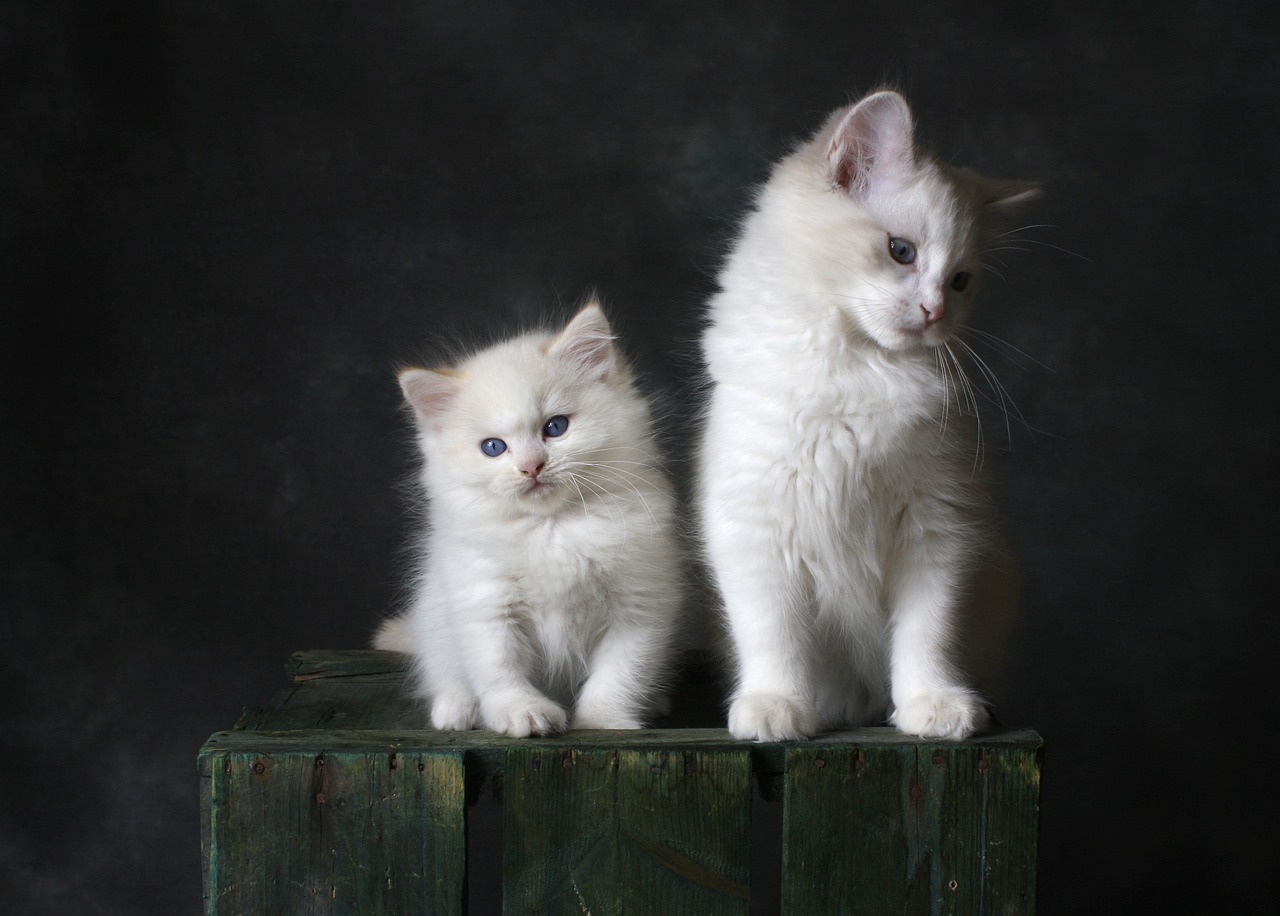
Consulting with a Veterinarian
When it comes to your indoor cat's health, consulting with a veterinarian is not just a good idea—it's essential. Just like we rely on our doctors for personalized health advice, your feline friend deserves the same level of care. A veterinarian can provide tailored dietary recommendations that align with your cat's unique health status, age, and lifestyle. Have you ever wondered if the food you’re feeding is truly the best option? A vet can help clear up any confusion and guide you through the maze of cat food choices.
One of the key reasons to consult a vet is to ensure that your cat's diet meets all their nutritional needs. Cats are obligate carnivores, which means they require specific nutrients that are primarily found in animal products. A veterinarian can help you understand the importance of proteins, taurine, and other essential nutrients that your cat needs to thrive. They can also help you identify any deficiencies in your current feeding regimen and suggest suitable alternatives. For example, if your cat is experiencing digestive issues, they might recommend a specialized diet that is easier on the stomach.
Moreover, regular check-ups are vital for monitoring your cat's overall health. During these visits, your vet can assess your cat’s weight, dental health, and any potential allergies or sensitivities. If you notice your kitty scratching more than usual or having an upset stomach, these could be signs of food allergies. Your veterinarian can conduct tests to identify specific allergens and help you find a suitable diet that avoids these ingredients. This proactive approach can save you and your cat from unnecessary discomfort.
In addition to dietary recommendations, your vet can also provide advice on portion control and feeding schedules. Did you know that the way you feed your cat can impact their weight and health? A veterinarian can help you establish a feeding routine that works best for your indoor cat, ensuring they receive the right amount of food at the right times. This is particularly important for indoor cats, who may not get as much exercise as outdoor cats, making them susceptible to obesity.
Lastly, it's important to remember that your cat's needs may change over time. As they age, their dietary requirements may shift, necessitating adjustments in their food. A veterinarian can help you navigate these changes and ensure that your cat remains healthy and happy throughout their life. So, if you ever find yourself in doubt about your cat's diet or health, don’t hesitate to reach out to a professional. After all, a well-fed cat is a happy cat!
- How often should I take my cat to the vet? It's generally recommended to have your cat checked at least once a year, but older cats or those with health issues may need more frequent visits.
- Can I consult a vet online? Yes, many veterinarians offer telehealth services that allow you to consult about your cat's health and dietary needs remotely.
- What should I do if my cat refuses to eat? If your cat is not eating, it's crucial to consult a veterinarian immediately, as this could indicate a serious health issue.
Regular Health Check-ups
When it comes to ensuring the health and happiness of your indoor cat, are absolutely essential. Just like we humans visit the doctor for our annual physicals, our furry friends need their own version of a health check-up to catch potential issues before they become serious. Think of it as a preventative measure—a way to keep your feline companion in tip-top shape!
During these check-ups, veterinarians can perform a variety of important assessments, including:
- Weight Monitoring: Keeping tabs on your cat’s weight is crucial, especially for indoor cats that may lead a more sedentary lifestyle. Obesity can lead to various health issues, so regular weigh-ins can help you stay ahead.
- Dental Health Evaluation: Oral hygiene is often overlooked, but dental diseases can cause significant discomfort and health problems for cats. Your vet can check for plaque, gum disease, and other dental issues.
- Vaccination Updates: Ensuring your cat is up-to-date on vaccinations is vital for preventing diseases. Your vet will remind you of any necessary shots during the visit.
- Parasite Control: Indoor cats can still be susceptible to parasites like fleas and worms. Regular check-ups allow for timely treatments to keep these pesky invaders at bay.
Moreover, these visits provide an excellent opportunity for you to discuss any behavioral changes or health concerns you may have noticed. Is your cat suddenly less active? Are they eating less? These could be signs of underlying issues that your vet can help address. The key is to be proactive rather than reactive—waiting until something seems wrong can lead to unnecessary stress for both you and your pet.
In addition to physical examinations, your veterinarian may recommend diagnostic tests such as blood work or urinalysis. These tests can unveil hidden health problems that aren't immediately apparent during a physical exam. For indoor cats, who may not have the same exposure to environmental risks as outdoor cats, these tests can be particularly insightful.
To ensure that you don’t miss out on these vital appointments, consider setting reminders on your calendar. Many pet owners find it helpful to schedule their cat’s check-ups at the same time each year, making it easier to remember. Regular check-ups not only help maintain your cat's health but also strengthen the bond between you and your furry friend, as they learn to trust the vet and the process.
In conclusion, regular health check-ups are not just a good idea—they're a necessity. By making these visits a priority, you’re investing in a longer, healthier life for your indoor cat. So, grab that calendar and start planning those vet visits today; your cat will thank you with purrs and cuddles!
- How often should I take my indoor cat to the vet? Generally, it's recommended to schedule a vet visit at least once a year for healthy adult cats. Kittens and senior cats may require more frequent check-ups.
- What should I expect during a vet visit? Expect a thorough examination, discussion of your cat's diet and behavior, and any necessary vaccinations or tests.
- Can I do anything to prepare for the vet visit? Yes! Make sure to write down any questions or concerns you have beforehand, and try to bring a sample of your cat's food if dietary changes are being discussed.
Dietary Recommendations
When it comes to ensuring your indoor cat thrives, from a veterinarian can be a game-changer. Every cat is unique, and their dietary needs can vary significantly based on factors such as age, weight, activity level, and any existing health conditions. Therefore, it’s crucial to consult with a vet who understands your feline companion’s specific requirements. They can help tailor a diet that not only meets nutritional guidelines but also caters to your cat's individual tastes and preferences.
For instance, kittens have different nutritional needs compared to adult cats. Kittens require a diet rich in protein and fat to support their rapid growth and development. On the other hand, senior cats might benefit from a diet lower in calories but still high in essential nutrients to maintain their health and vitality. Your veterinarian can recommend specific brands or formulations that align with these needs.
In addition to age, weight plays a significant role in dietary recommendations. Overweight cats may require a special weight management formula that is lower in calories but still provides the necessary nutrients. Conversely, underweight cats may need a high-calorie diet to help them gain weight healthily. Your vet can assess your cat’s body condition score and suggest appropriate portion sizes and types of food.
Moreover, if your cat has any health issues, such as diabetes, kidney disease, or food allergies, your veterinarian will likely recommend a specialized diet. For example, cats with kidney disease often need food that is lower in protein and phosphorus to reduce kidney strain. On the other hand, cats with diabetes may benefit from a high-protein, low-carbohydrate diet to help regulate their blood sugar levels.
Here are some general dietary recommendations that veterinarians might suggest:
- High-quality protein: Ensure that the first ingredient in your cat's food is a high-quality source of protein, such as chicken, turkey, or fish.
- Balanced fats: Look for healthy fats like omega-3 and omega-6 fatty acids, which are essential for a shiny coat and overall health.
- Limited carbohydrates: Cats are obligate carnivores, so their diet should be low in carbs. Avoid foods with excessive fillers like corn and wheat.
- Essential vitamins and minerals: Ensure the diet includes a range of vitamins and minerals to support your cat's immune system and overall health.
Lastly, remember that transitioning your cat to a new diet should be done gradually. Sudden changes can lead to digestive upset. Mixing the new food with the old food over a week or so can help ease this transition. Always monitor your cat’s reaction to new foods and consult your veterinarian if you notice any adverse effects.
Q: How often should I feed my indoor cat?
A: Most adult indoor cats do well with two meals per day, while kittens may require three to four smaller meals.
Q: Can I give my cat human food?
A: Some human foods are safe for cats in moderation, such as cooked chicken or fish. However, avoid foods that are toxic to cats, like onions, garlic, and chocolate.
Q: How can I tell if my cat is overweight?
A: You can assess your cat's weight by feeling their ribs. You should be able to feel them without excess fat covering. If you can't, it might be time for a dietary review.
Q: Should I feed my cat a grain-free diet?
A: Grain-free diets can be beneficial for some cats, especially those with specific sensitivities. However, it’s essential to ensure that the diet is balanced and meets all their nutritional needs.
Frequently Asked Questions
- What should I look for in a balanced diet for my indoor cat?
When choosing a balanced diet for your indoor cat, focus on high-quality proteins, healthy fats, and essential vitamins and minerals. Look for cat food that lists meat as the first ingredient, as cats are obligate carnivores and thrive on animal-based proteins. Additionally, consider the moisture content, especially if you're opting for dry food, as hydration is crucial for your cat's health.
- Is dry food or wet food better for indoor cats?
Both dry and wet foods have their pros and cons. Dry food is convenient and can help with dental health, but it has lower moisture content. Wet food, on the other hand, is higher in moisture, which is great for hydration, and it often appeals more to picky eaters. A mix of both can provide a balanced approach, ensuring your cat gets the benefits from each type.
- How can I determine the right portion size for my cat?
To determine the right portion size, consider your cat's age, weight, and activity level. Most cat food packages provide guidelines based on weight, but it's essential to adjust portions according to your cat's specific needs. Regularly monitor their weight and consult with your vet to ensure they maintain a healthy body condition.
- What are some signs my cat may have food allergies?
Signs of food allergies in cats can include itching, excessive grooming, skin irritations, gastrointestinal upset, or changes in behavior. If you notice any of these symptoms, it’s crucial to consult with your veterinarian to identify the specific allergens and adjust your cat's diet accordingly.
- How often should I feed my indoor cat?
The ideal feeding frequency can vary, but many cat owners find success with two to three meals per day. Some prefer to offer smaller, more frequent meals, while others stick to larger meals. The key is to establish a routine that suits both you and your cat, ensuring they receive the right amount of food without overindulging.
- Why is it important to consult a veterinarian about my cat's diet?
Consulting a veterinarian is essential because they can provide personalized dietary recommendations based on your cat's health status, age, and any specific needs they may have. Regular check-ups also allow for monitoring your cat's health and making necessary adjustments to their diet, ensuring they remain happy and healthy.

